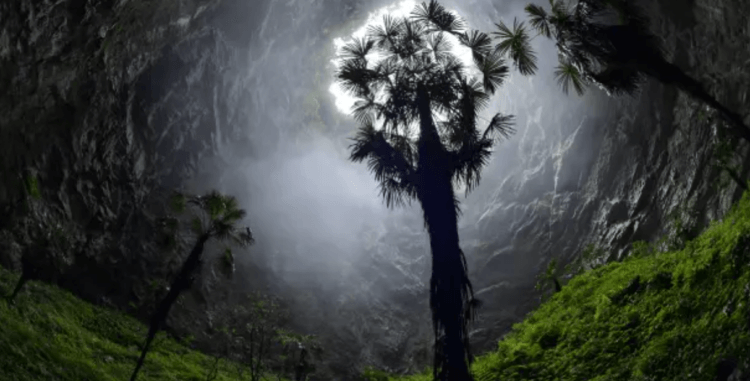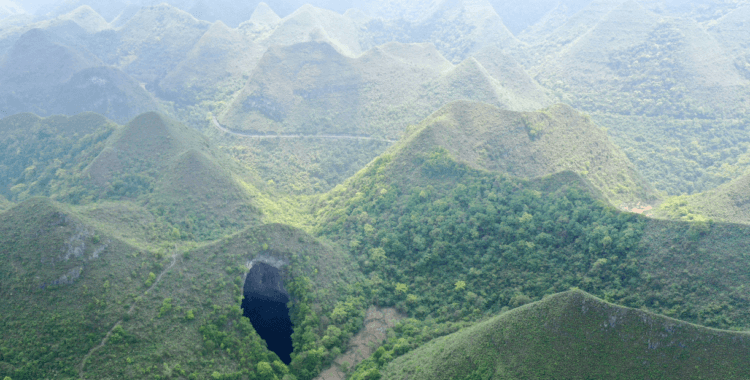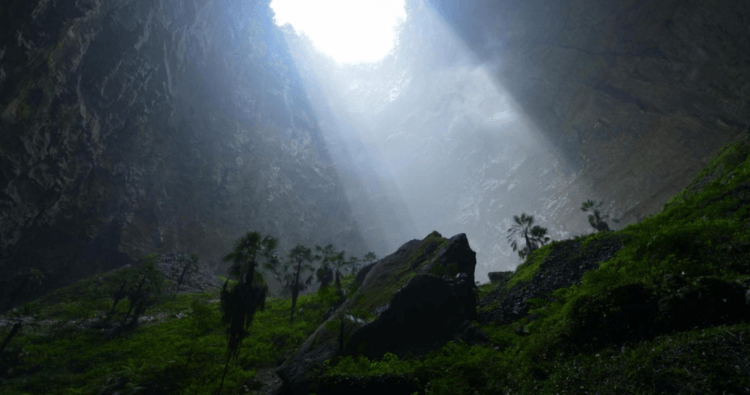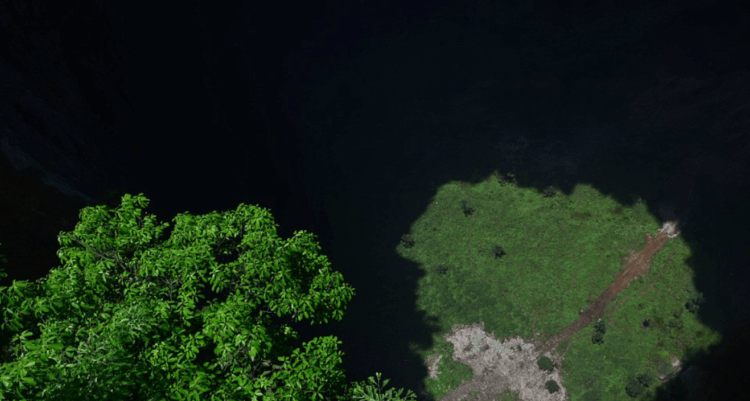The southwestern part of China contains many giant sinkholes called “tianken”, which means “heavenly pits” or “heavenly pits”. The entrances to these caves look like carefully cut holes, as if they were made with giant cake pans. The caves themselves are considered the largest and deepest in the world. But they are interesting not only for their size – these cavities serve as a refuge for forests and untouched ecosystems, since people do not have access to them, in addition, the existence of many of them became known only in recent years.

Lush vegetation at the bottom of a sinkhole. Photo source: courier.unesco.org
How karst caves appeared
Karst caves in southern China are limestone formations. Over hundreds of thousands of years, rainwater seeped through the soil and into the rock, causing the limestone to gradually erode. In addition, the slightly acidic groundwater has expanded the tunnels and caves. At some point, they grew so large that they could no longer support the “ceiling,” resulting in sinkholes.
Such sinkholes exist not only in China, but also in other parts of the planet. And they still arise to this day. Not long ago we talked about a case in Florida when a man fell into a crater 6 meters in diameter along with part of his house. However, many more of these craters are concentrated in the southwestern part of China. Only Tiankeng, that is, «heavenly pits» there are about 200 pieces here.

giant karst sinkhole in southern China. Photo source: livescience.com
“Sky Pits” in China
Basically, all sinkholes in China are concentrated in the area from the central province of Shaanxi to the Guangxi Zhuang Autonomous Region in the southwest. Therefore, China has the highest share of total surface area of any country in the world. The United States of America is in second place. But not every sinkhole here is considered a “sky pit.”
For a sinkhole to be classified as a tiankeng, it must have a width and depth of at least 100 meters, and there must be a river flowing at the bottom or at least traces of one must be present. In addition, the hole in the ground should be round. As mentioned above, «heavenly gaps» are among the largest in the world. For example, the Xiaozhai Tiankeng Sinkhole, located in Fengjie County in south-central China, is currently considered the deepest in the world, with a depth of 342 meters. At the bottom of this gap there is a river, which is fed by the rainy season.
Despite its gigantic size, it is not so easy to discover Tiankeng, since they are located in dense forests among the mountains. Therefore, many of them were opened only in the last decade. The latest discovery was made in May 2022 in the Guangxi region. The sinkhole was discovered near Ping'e Village in Lei County. It had a depth of 192 m and a width of 306 meters.

Forests grow inside the “paradise pits”
At the bottom of the sinkhole, discovered in 2022, scientists saw an ancient forest with trees about 40 meters high. At the same time, the undergrowth was very dense and reached the height of a man. And although this discovery became a sensation, such a find was not the first.
For example, a similar forest was discovered by a research team in 2016 at the bottom of the Tiankeng Dashiwei. The researchers report that the landscape took their breath away, revealing a pristine underground forest untouched by humans, home to endangered plants that date back to the time of dinosaurs. In total, scientists were able to discover more than 70 species of plants that are listed in the Red Book.

Thus, tiankengs serve as a refuge for endangered plants and forest ecosystems, and therefore are a kind of natural repository of biodiversity. Moreover, it is possible that there are species in caves about which science knows nothing at all. Currently, the biodiversity of the “paradise pits” is poorly understood.
Tiankengs have now become a popular tourist attraction. Scientists worry that human activity is threatening plant biodiversity and will lead to the degradation of underground springs and forests. As a result, the unique ecological environment of the Tiankeng may be irretrievably lost. There are currently not many pristine ecosystems left on Earth.
Don't forget to subscribe to our Zen and Telegram channels so you don't miss the most interesting and incredible scientific discoveries!
Finally, we suggest that you familiarize yourself with other unusual and mysterious holes in the ground that have been discovered in different parts of the planet. Some of them are located in Russia. You can read more about them at the link.